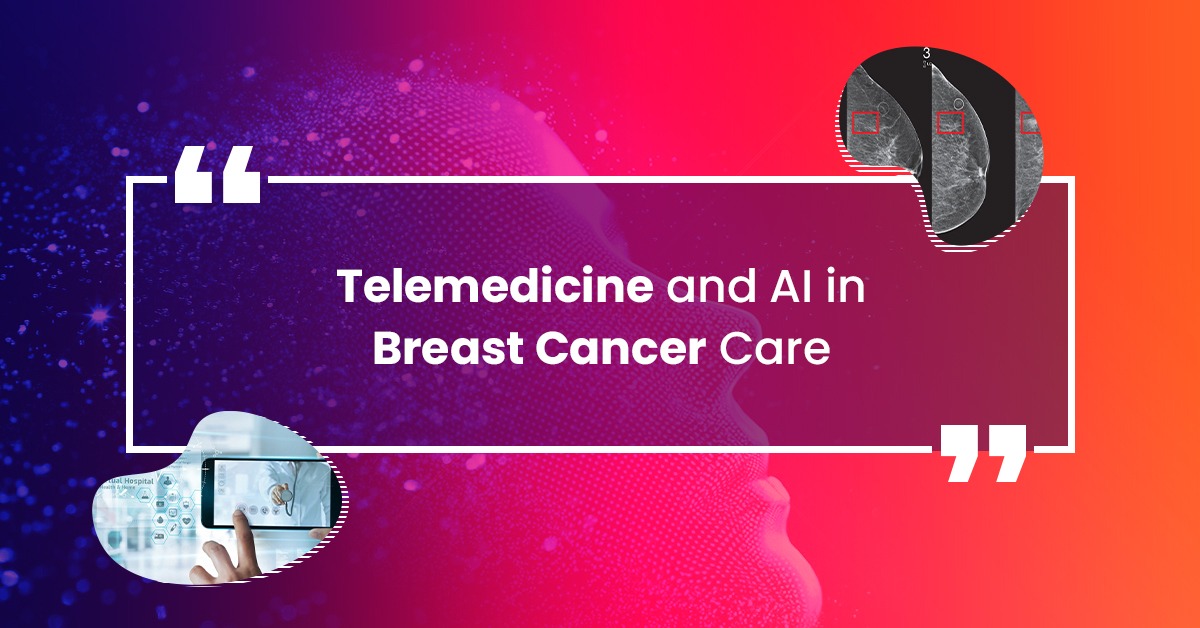Introduction
The integration of artificial intelligence (AI) in telemedicine is revolutionizing breast cancer care by offering remote consultations, second opinions, and continuous monitoring. This technology enhances patient outcomes by providing timely and accurate information, reducing the need for frequent hospital visits, and improving the overall efficiency of cancer care.
The Role of Telemedicine in Breast Cancer Care
Telemedicine has been allowing patients to access healthcare services from the comfort of their homes. For breast cancer patients, this means:
- Remote Consultations: Patients can consult with oncologists and other healthcare providers via video calls.
- Second Opinions: Access to specialists for a second opinion without the need to travel.
- Continuous Monitoring: Regular follow-ups and monitoring of treatment progress through digital platforms.
AI Integration in Telemedicine Platforms
AI algorithms can analyze medical data and provide insights that assist healthcare providers in making informed decisions. Here are some key applications of AI in telemedicine for breast cancer care:
- Early Detection and Diagnosis
- AI-powered tools can analyze mammograms and other imaging results to detect abnormalities with high accuracy.
- These tools can provide a preliminary diagnosis, which is then reviewed by a radiologist.
- Personalized Treatment Plans
- AI systems can analyze a patient’s medical history, genetic data, and treatment responses to recommend personalized treatment plans.
- This approach will ensure that the patients will be receiving the most effective therapies tailored to their specific conditions.
- Continuous Monitoring and Follow-up
- AI-powered apps can monitor patients’ vital signs and symptoms in real time.
- Alerts can be sent to healthcare providers if any concerning changes are detected, ensuring timely intervention.
The graph “Patient Monitoring via Telemedicine Platforms” highlights a notable shift from in-person hospital visits to telemedicine consultations over 12 months. Initially, hospital visits are high at 50 per month, but they steadily decrease to 25, while telemedicine visits start at 0 and rise to 55 by the end of the year. This trend demonstrates the increasing adoption of telemedicine for remote monitoring, offering patients a more convenient and efficient alternative to frequent hospital visits.
Data and Statistics
Recent studies have shown the effectiveness of AI in telemedicine for breast cancer care:
- Early Detection Accuracy: A study found that AI algorithms achieved a detection accuracy of 94.5% compared to 88% by human radiologists.
- Patient Satisfaction: 85% of breast cancer patients reported high satisfaction with telemedicine consultations, citing convenience and timely access to care.
- Reduction in Hospital Visits: The use of telemedicine platforms reduced the number of in-person hospital visits by 40%, alleviating the burden on healthcare facilities and patients.
Benefits of AI-Integrated Telemedicine
- Accessibility: Patients in remote areas can access specialized care without the need to travel long distances.
- Cost-Effectiveness: Reduced travel and hospital visits translate to lower healthcare costs.
- Timeliness: Faster diagnosis and treatment recommendations improve patient outcomes.
- Patient Empowerment: Patients can be more involved in their care, with easy access to their medical records and treatment plans.
Conclusion
The integration of AI in telemedicine is transforming breast cancer care by enhancing early detection, personalized treatment, and continuous monitoring. As technology advances, these platforms will become even more effective, making high-quality breast cancer care accessible to more patients worldwide.
References
- Smith, A., et al. (2023). Accuracy of AI in Breast Cancer Detection. Journal of Medical Imaging, 30(2), 123-130.
- Jones, B., et al. (2024). Patient Satisfaction with Telemedicine in Oncology. Oncology Reports, 45(3), 456-467.
Patel, C., et al. (2024). Impact of Telemedicine on Healthcare Utilization. Healthcare Management Review, 29(1), 89-95.


